Welcome to Matrix Education
To ensure we are showing you the most relevant content, please select your location below.
Select a year to see courses
Learn online or on-campus during the term or school holidays
Learn online or on-campus during the term or school holidays
Learn online or on-campus during the term or school holidays
Learn online or on-campus during the term or school holidays
Learn online or on-campus during the term or school holidays
Learn online or on-campus during the term or school holidays
Learn online or on-campus during the term or school holidays
Get HSC Trial exam ready in just a week
Get HSC exam ready in just a week
Select a year to see available courses
Science guides to help you get ahead
Science guides to help you get ahead
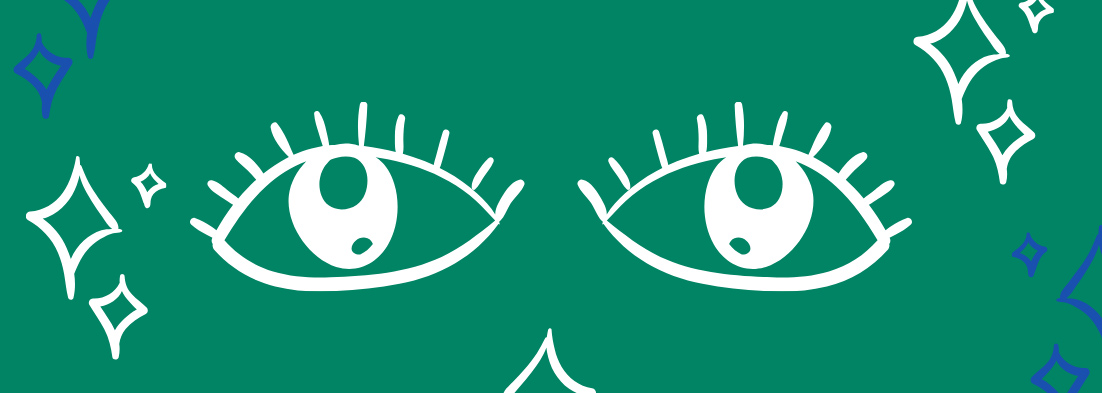
For the HSC you need to be able to discuss images and analyse them for meaning. For students without a visual art background, visual techniques can be especially tricky. For example, consider this image from the HSC English 2015 Paper 1 – Area of Study Paper:
Text One – Image: (a) How does the image represent an individual who values discovered objects?
You may find this daunting, but you shouldn’t because, in this post, we provide a comprehensive list of visual techniques for you to discuss in your essays.
Take the stress out of analysis with a textual analysis planner
If you would like more help with HSC English, you should read our Beginner’s Guide to Acing HSC English!

Level up how you analyse texts and take notes with expert strategies and templates!

Fill out your details below to get this resource emailed to you.
"*" indicates required fields
Below is a list of techniques when analysing a visual text. Matrix English students get a comprehensive glossary of techniques in their English Theory Books.
Boost your HSC English Std marks these July holidays
Expert teachers, detailed feedback, 2 weeks of focused revision. Enrol now - courses start next week!
Like in literature, an allusion is a reference to another text, work of art, historical figure, mythical figure, or idea. Artists use allusions to develop meaning by signalling a connection to or awareness of other ideas.
For example, in Matt Groening’s TV show The Simpsons he often makes allusions to well-known works of arts. The example below makes allusions to Salvador Dali’s Persistence of Memory by replacing it’s famous clocks with his characters.
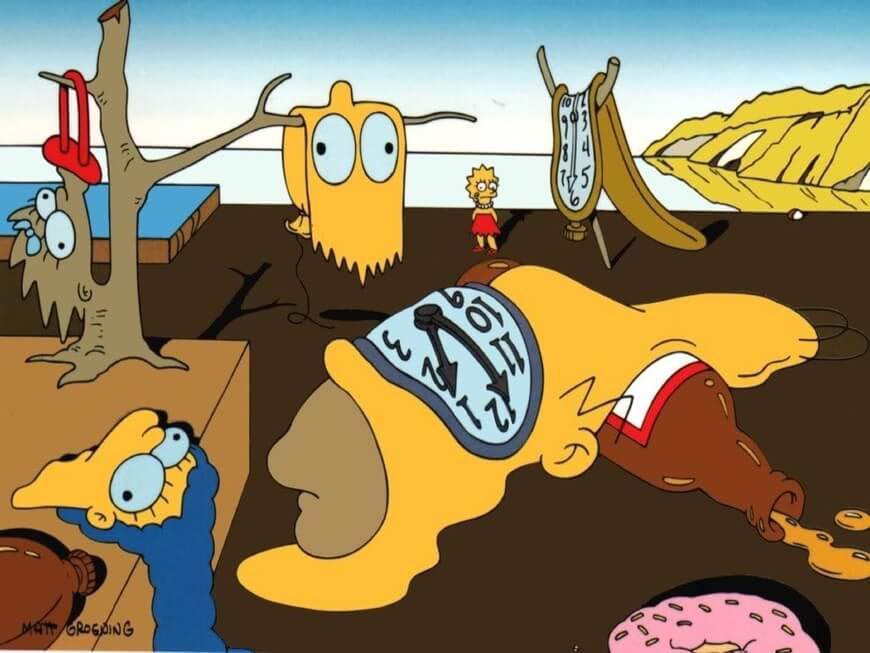
Now, rather than commenting on time slipping away, it comments on how we waste time with entertainment.
The angle used to compose the image. Imagine that the painting or image has been taken using an imaginary camera: angles then refers to the tilt of this imagined camera in relation to the scene and characters in the image.
Unusual camera angles can emphasise an action sequence, disorientate the audience, and suggest the relationship amongst characters or characters and the landscape.
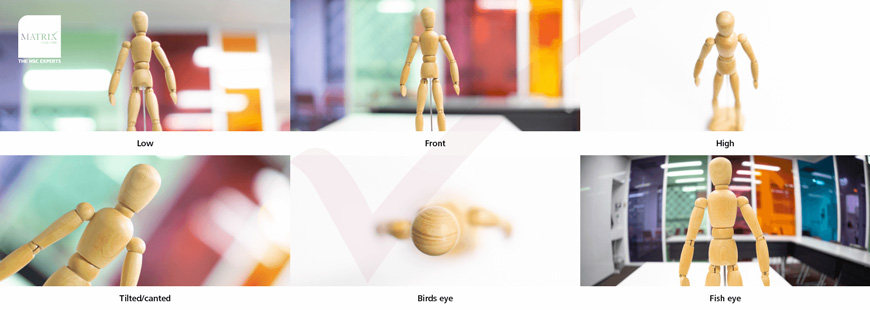
Facial expressions, gestures, stance or position – can convey the attitude, feelings or personality of the individual shown.
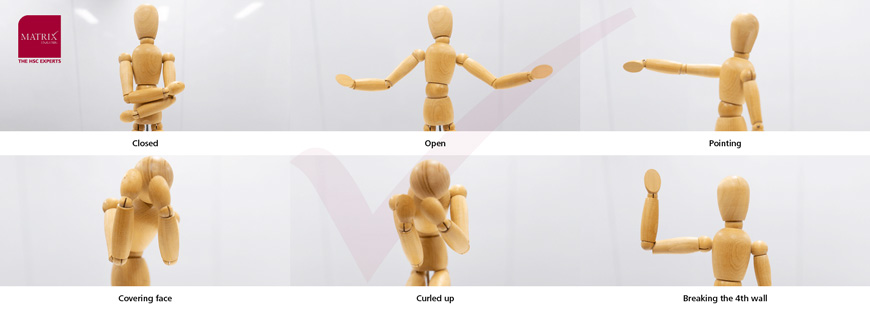
What is included is deliberately placed (also applies to what is omitted). Consider all inclusions and omissions e.g. surroundings, objects, clothing etc.
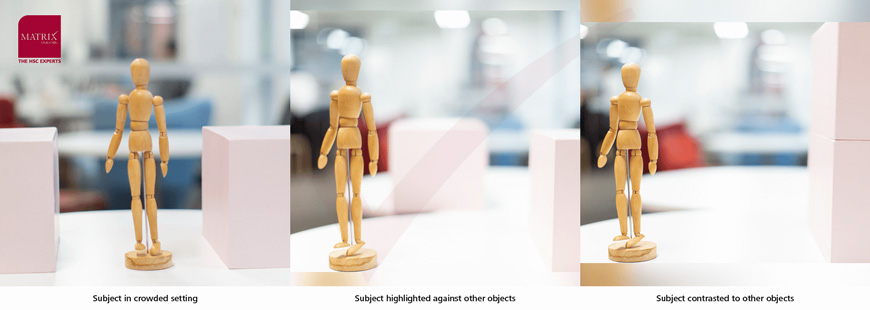
In black & white images examine the use of contrast, light and darkness. In a colour image, colours are used to signify feelings and evoke a response. For example:
Hue, Tone, Shade, and Tints are other ways of referring to colours. Specifically:

The arrangement of opposite or differing elements (light and dark, large and small, rough and smooth) to create interest, excitement or drama.
In William Holbrook Beard’s “Discovery of Adam” (1891), the artist uses the contrast between the apes, dressed and acting as scientists, and the prehistoric creature in the back to satirise the focus on Darwinism in the nineteenth century.
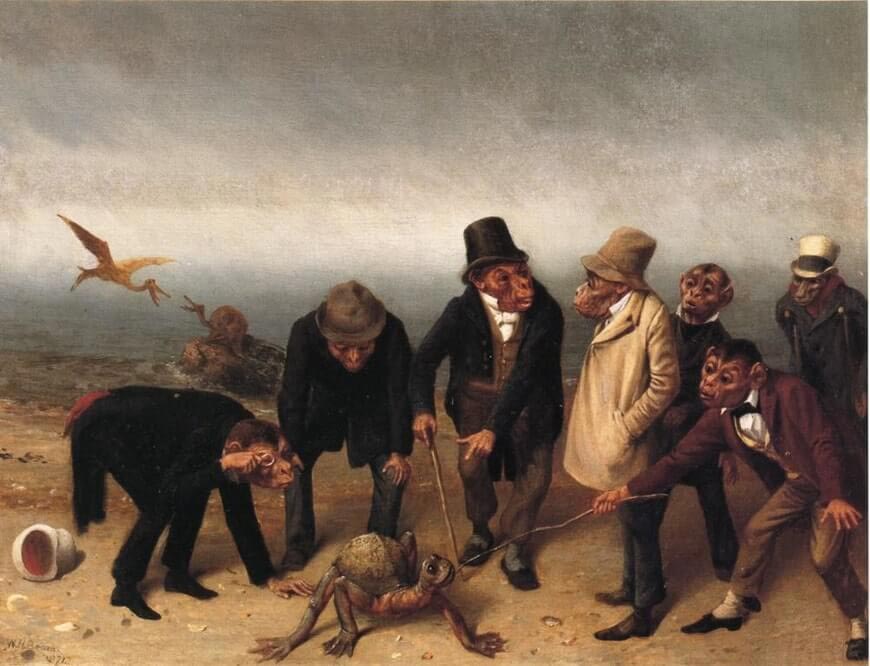
Compositional axis describes where the subjects in an image are placed. In art theory, the axis used bore implicit meaning:
Depth refers to the three-dimensional aspect of an image. Composers use depth to create a sense of scale or proportion. They also use depth to illustrate the proximity between objects.
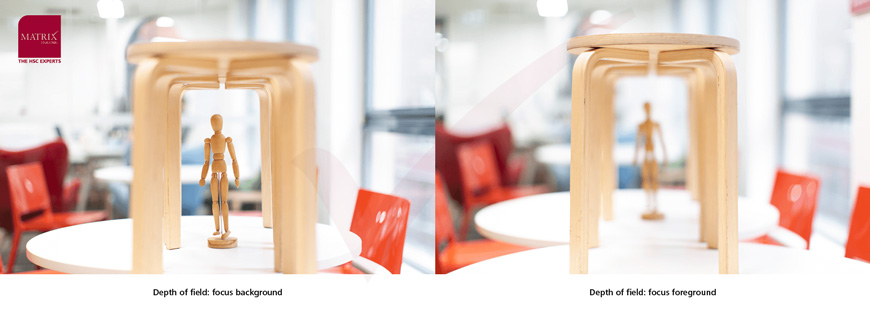
The same camera shots and angles relevant to film. For example:
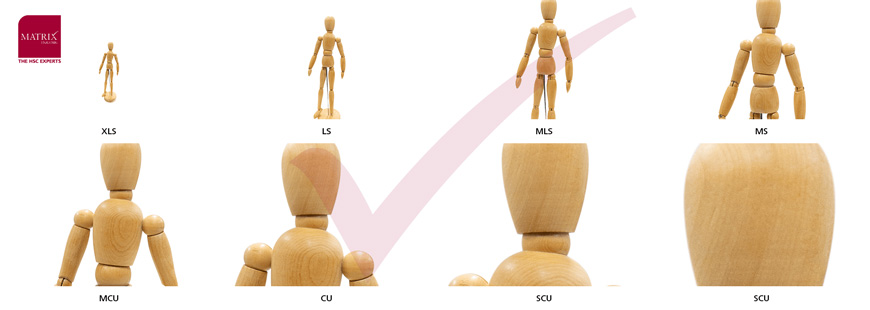
The way a character looks with their eyes and face. Gaze is a useful way to convey meaning through an image because we can see where and how a figure is looking at something.
In Eduardo Manet’s “A Bar at the Folies-Bergère” (1882), the subject stares at the viewer who stands in (through a trick of perspective reminiscent of, or possibly a homage to, Valesquez’s Las Minas) for the customer we see in the reflection. The server’s gaze is indifferent, reflecting her status in nineteenth-century Parisian society.
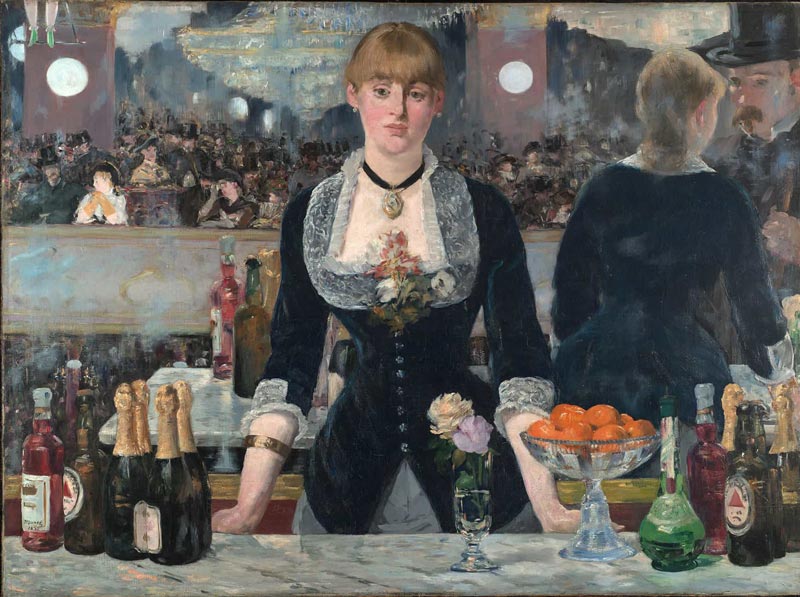
This describes the types of line used in an image and the effect they have on the viewers understanding of the image. There are meanings associated with different types of lines:
See Orientation, Point of View
What has been deliberately left out of the image.
Relates to framing and angle: is the responder positioned above the image (looking down), below or at eye level?
Orientation and point of view can be used to develop a particular relationship between the view and items in the painting. Like direct gaze (see above), point of view can be used to develop indirect gaze where a subject is unaware that they are being watched.
Consider which objects have been placed in the foreground, middle ground or background.
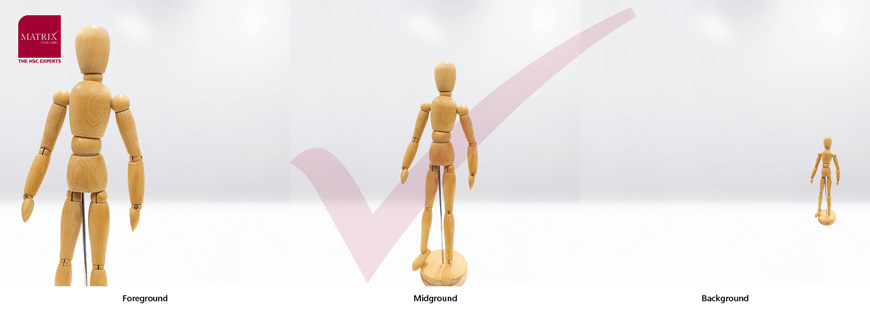
Divide an image into thirds from the top and sides and look at the placement of people and/or objects. An object in the top third is usually empowered whereas anything in the bottom third is disempowered.
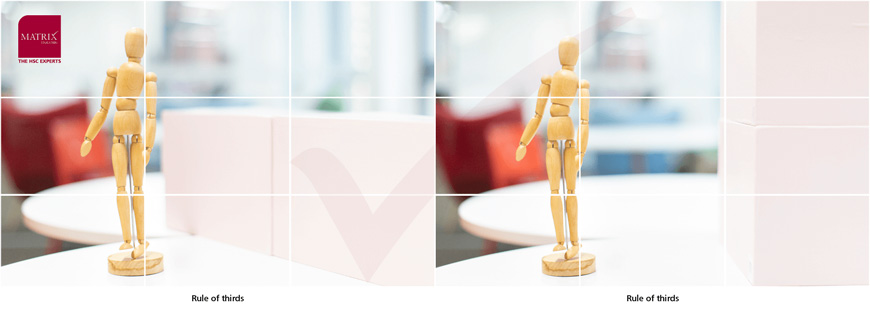
The part that your eyes are first drawn to in the visual. Colour, image and layout determine what the salient image is.
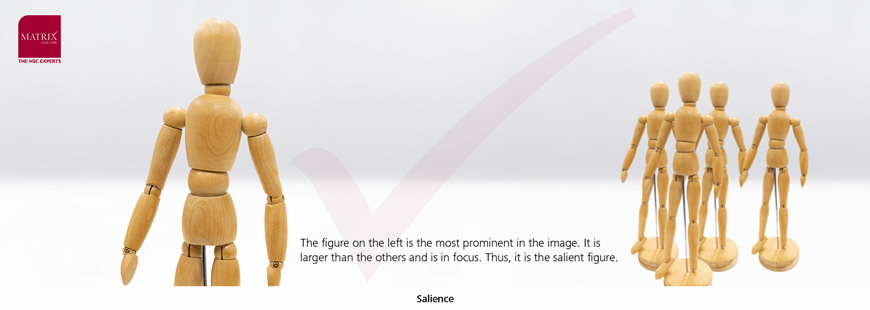
This describes the size of an object. Artists often play with the size of parts of their work to develop a particular meaning. For example, Michelangelo, in his statue of “David” (1501-1504) made the hands unusually large to signify that they brought down Goliath the Giant.
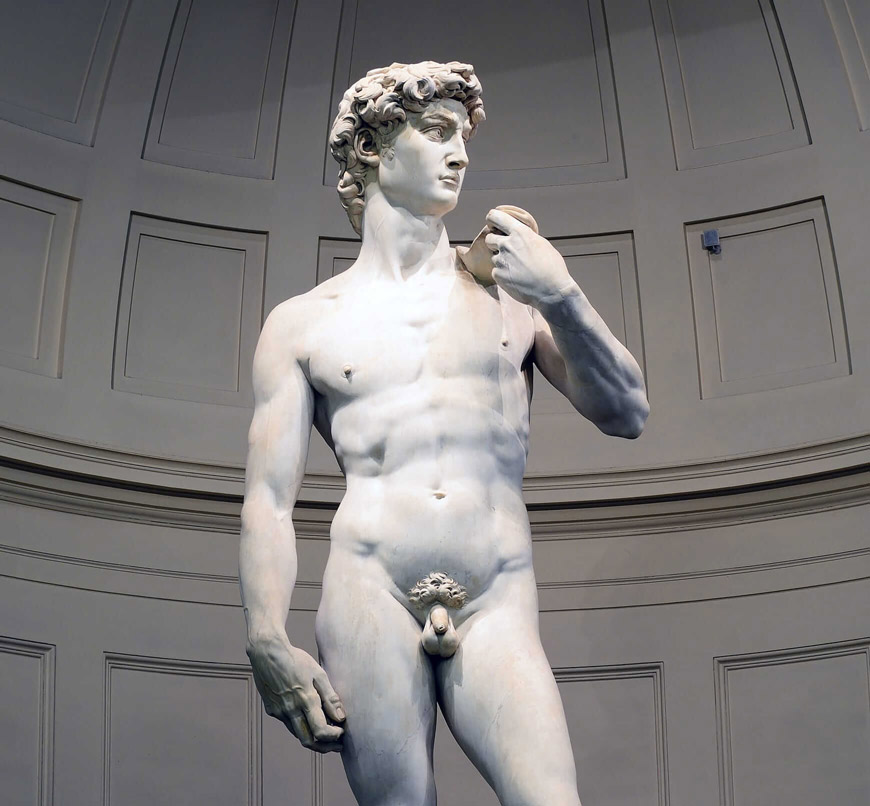
This refers to the empty portions of an image. Space is used to draw attention to the objects that are in the image.
For example, an image with lots of space can convey isolation or emptiness while images with little space can convey chaos and intense activity.
Australian painter Jeffery Smart was renowned for his use of space to convey the emptiness and loneliness of urban life.
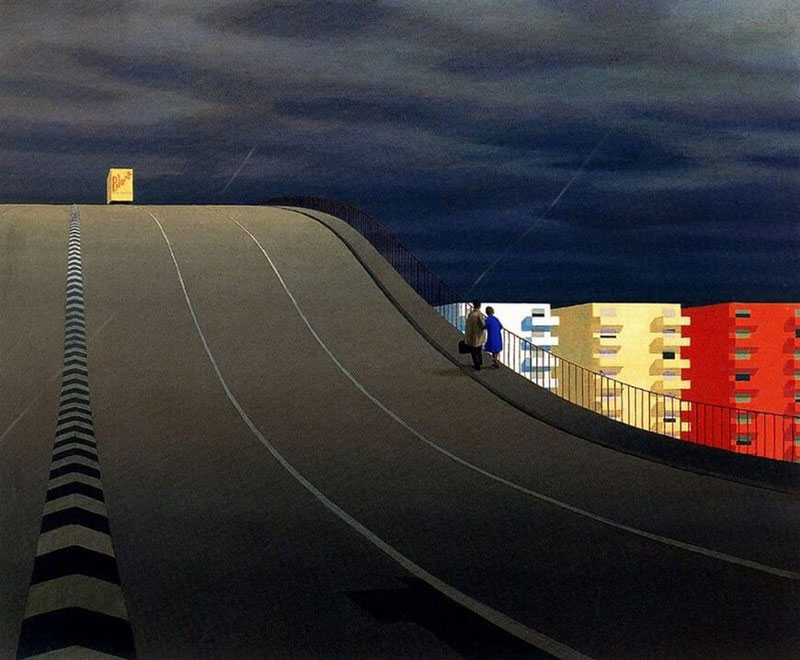
The use of an image to represent one or more (often complex) ideas.
Australian artist Del Kathryn Barto often uses symbolism in her paintings, such as 2013 Archibald winner “Hugo” (2013).
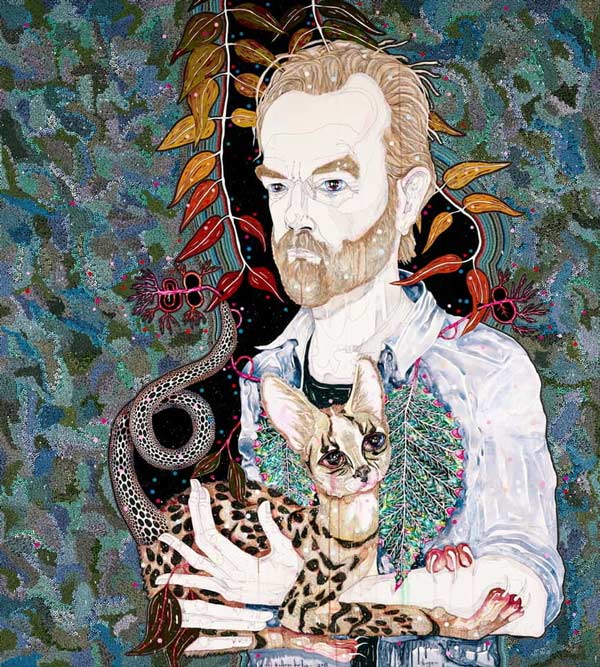
The actual texture of an object. Is it rough or smooth? Does it have ridges and different feelings to touch. For example, oil paints are quite thick and give paintings a unique thickness that artists can intensify by having lots of layers. Some artists experiment with different textures to develop meaning in their works.
For example, Frida Kahlo used the texture of oil on masonite to emphasize the broken plinth supporting her and the nails embedded in her face in her self-portrait, “The Broken Column” (1944).
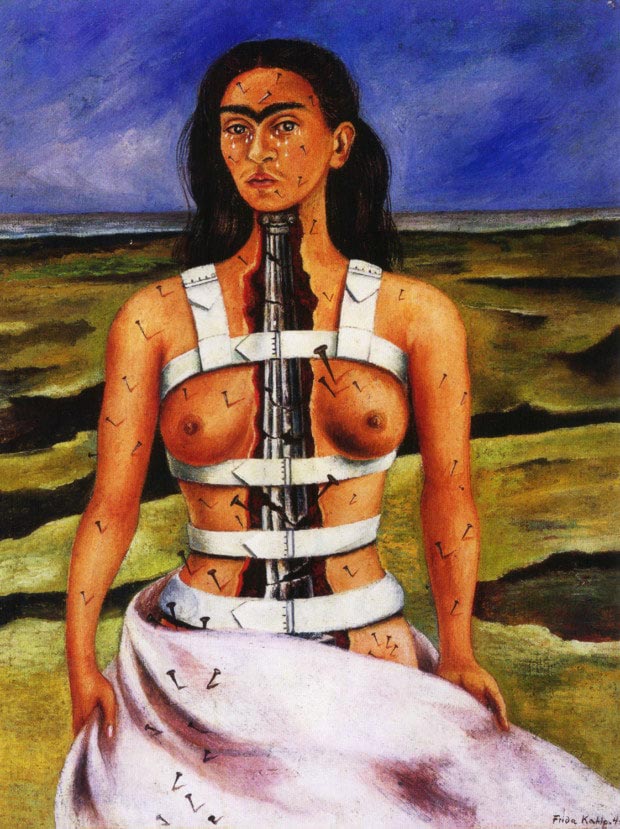
The line that our eyes take when looking at a visual. Composers deliberately direct our reading path through the vectors. E.g. If all of the subjects are tall, long and upright our eyes follow straight vectors that lead to the top of the frame. This could make the subject seem powerful or inflexible.
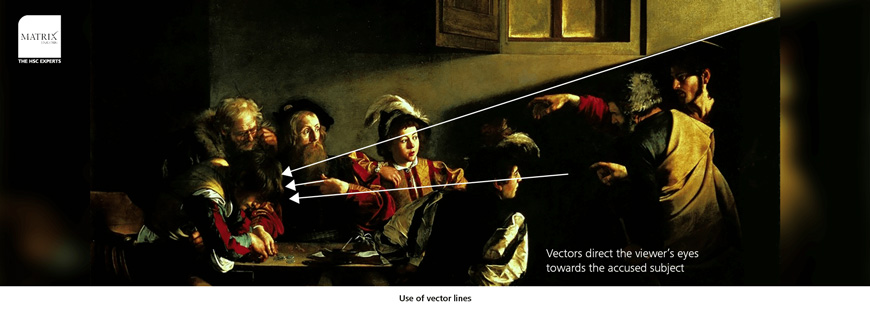
Create Band 6 essays and insightful analysis
Expert teachers. Band 6 resources. Proven results. Boost your marks these July holidays - limited spots left!
© Matrix Education and www.matrix.edu.au, 2025. Unauthorised use and/or duplication of this material without express and written permission from this site’s author and/or owner is strictly prohibited. Excerpts and links may be used, provided that full and clear credit is given to Matrix Education and www.matrix.edu.au with appropriate and specific direction to the original content.